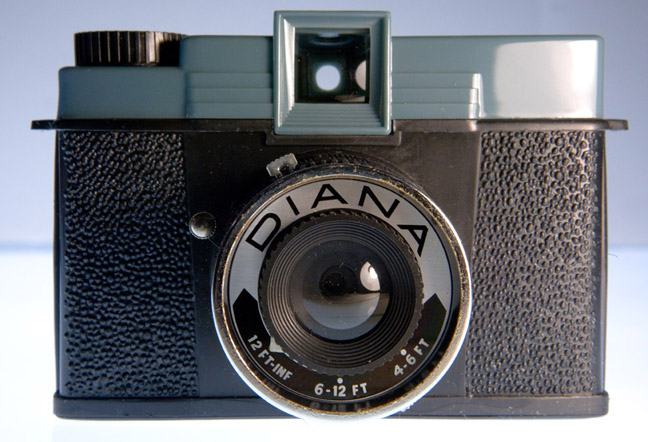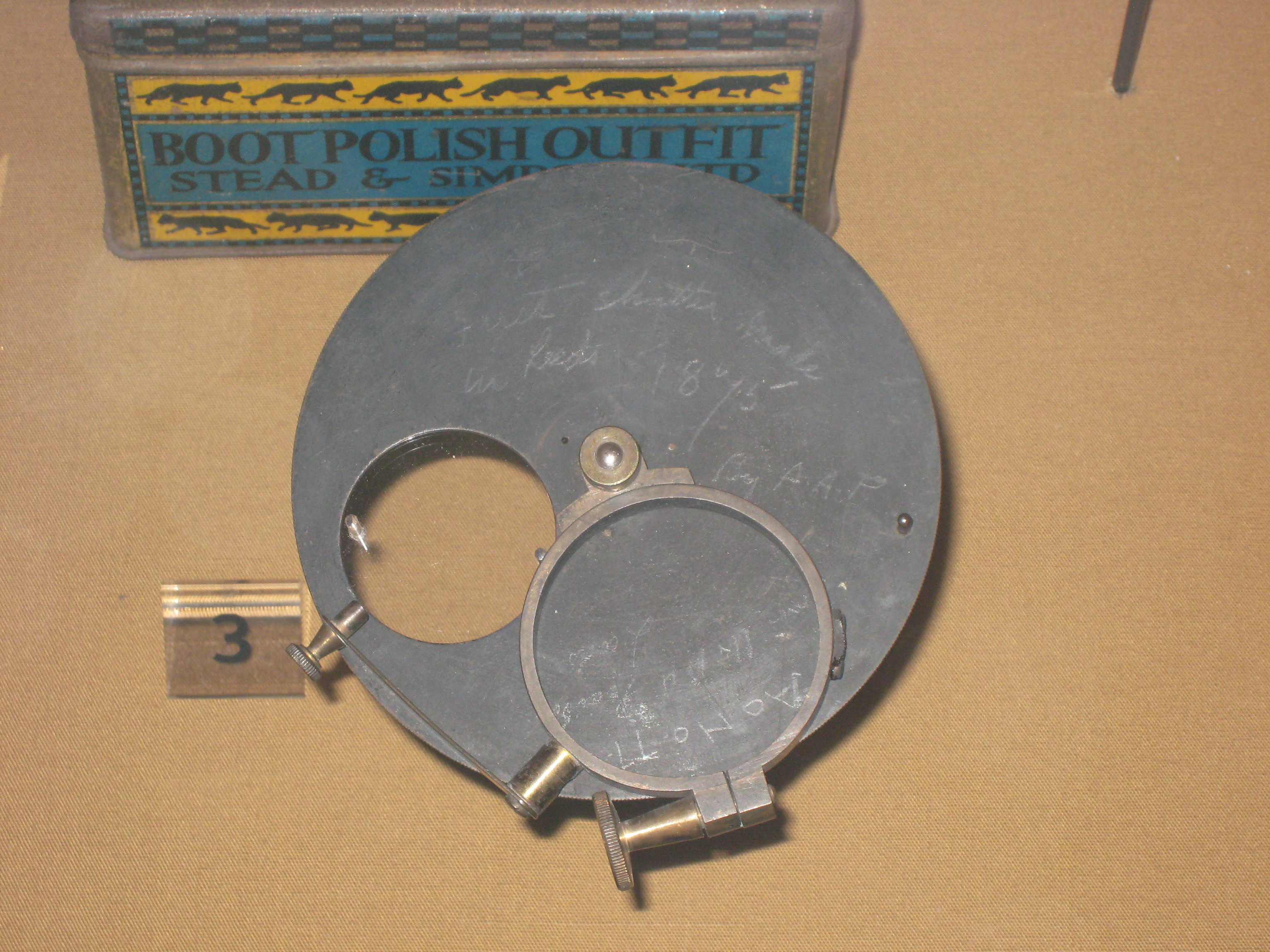|
Smena (camera)
Smena (russian: Смена, Eng: "Change") is a series of low-cost 35 mm film cameras manufactured in the Soviet Union by the LOMO factory from 1953 to 1991. They were designed to be inexpensive and accessible to the public, made of bakelite or black plastic for the later models. Their mode of operation was exclusively manual, to the extent that winding of film is separated from shutter cocking. In the 1960s and 1970s they were exported by Soviet era export conglomerate Mashpriborintorg (russian: Машприборинторг). Austrian company Lomographische AG now promotes Smenas, as exclusive distributor under agreement with LOMO PLC. Specifications Smena 8MLomography specs * Lens: Triplet 43, 40 mm, f/4, 3 elements * Focal range: 1 m to infinity, [...More Info...] [...Related Items...] OR: [Wikipedia] [Google] [Baidu] |
Smena 8
Smena may refer to: * Smena (camera) * Smena Minsk a Belarusian football club. *FC Smena Komsomolsk-on-Amur, Russian football club * Smena (Slovak newspaper) was a Slovak language newspaper in 1995 taken over by SME * Smena (newspaper) a newspaper in Russia. * DYuSSh Smena-Zenit DYuSSh Smena-Zenit (russian: ДЮСШ "Смена-Зенит"), also known as FC Zenit academy or formerly DYuSSh Smena, is a Russian youth football academy based in Saint Petersburg. It is currently headed by Dutchman Henk van Stee. History T ... a soccer academy * Smena (football club) {{disambig ... [...More Info...] [...Related Items...] OR: [Wikipedia] [Google] [Baidu] |
35mm Format
135 film, more popularly referred to as 35 mm film or 35 mm, is a format of photographic film used for still photography. It is a film with a film gauge of loaded into a standardized type of magazine – also referred to as a cassette or cartridge – for use in 135 film cameras. The engineering standard for this film is controlled by ISO 1007 titled '135-size film and magazine'. The term 135 was introduced by Kodak in 1934 as a designation for 35 mm film specifically for still photography, perforated with Kodak Standard perforations. It quickly grew in popularity, surpassing 120 film by the late 1960s to become the most popular photographic film size. Despite competition from formats such as 828, 126, 110, and APS, it remains the most popular film size today. The size of the 135 film frame with its aspect ratio of 1:1.50 has been adopted by many high-end digital single-lens reflex and digital mirrorless cameras, commonly referred to as " full frame" ... [...More Info...] [...Related Items...] OR: [Wikipedia] [Google] [Baidu] |
Camera
A camera is an optical instrument that can capture an image. Most cameras can capture 2D images, with some more advanced models being able to capture 3D images. At a basic level, most cameras consist of sealed boxes (the camera body), with a small hole (the aperture) that allows light to pass through in order to capture an image on a light-sensitive surface (usually a digital sensor or photographic film). Cameras have various mechanisms to control how the light falls onto the light-sensitive surface. Lenses focus the light entering the camera, and the aperture can be narrowed or widened. A shutter mechanism determines the amount of time the photosensitive surface is exposed to the light. The still image camera is the main instrument in the art of photography. Captured images may be reproduced later as part of the process of photography, digital imaging, or photographic printing. Similar artistic fields in the moving-image camera domain are film, videography, and cinematog ... [...More Info...] [...Related Items...] OR: [Wikipedia] [Google] [Baidu] |
Soviet Union
The Soviet Union,. officially the Union of Soviet Socialist Republics. (USSR),. was a List of former transcontinental countries#Since 1700, transcontinental country that spanned much of Eurasia from 1922 to 1991. A flagship communist state, it was nominally a Federation, federal union of Republics of the Soviet Union, fifteen national republics; in practice, both Government of the Soviet Union, its government and Economy of the Soviet Union, its economy were highly Soviet-type economic planning, centralized until its final years. It was a one-party state governed by the Communist Party of the Soviet Union, with the city of Moscow serving as its capital as well as that of its largest and most populous republic: the Russian Soviet Federative Socialist Republic, Russian SFSR. Other major cities included Saint Petersburg, Leningrad (Russian SFSR), Kyiv, Kiev (Ukrainian Soviet Socialist Republic, Ukrainian SSR), Minsk (Byelorussian Soviet Socialist Republic, Byelorussian SSR), Tas ... [...More Info...] [...Related Items...] OR: [Wikipedia] [Google] [Baidu] |
LOMO
LOMO (russian: Ленинградское Oптико-Mеханическое Oбъединение, Leningradskoye Optiko-Mekhanicheskoye Obyedinenie, Leningrad Optical Mechanical Association) is a manufacturer of medical and motion-picture lenses and equipment based in St. Petersburg, Russia. The company was awarded three Order of Lenin decorations by the Soviet Union. Its Lomo LC-A consumer camera was the inspiration for the lomography photographic movement. History The company was founded in 1914 in Petrograd (now Saint Petersburg). It was established as a French – Russian limited company to produce lenses and cameras. It manufactured gun sights during World War I. In 1919, it was nationalised. In 1921, the factory was named the Factory of State Optics, G.O.Z. In 1925, camera production was resumed, and several lens designs tested between 1925 and 1929. Further reorganisations of the Soviet optical factories in several stages finally resulted in that the factory at Len ... [...More Info...] [...Related Items...] OR: [Wikipedia] [Google] [Baidu] |
Bakelite
Polyoxybenzylmethylenglycolanhydride, better known as Bakelite ( ), is a thermosetting phenol formaldehyde resin, formed from a condensation reaction of phenol with formaldehyde. The first plastic made from synthetic components, it was developed by Leo Baekeland in Yonkers, New York in 1907, and patented on December 7, 1909 (). Because of its electrical nonconductivity and heat-resistant properties, it became a great commercial success. It was used in electrical insulators, radio and telephone casings, and such diverse products as kitchenware, jewelry, pipe stems, children's toys, and firearms. The "retro" appeal of old Bakelite products has made them collectible. The creation of a synthetic plastic was revolutionary for the chemical industry, which at the time made most of its income from cloth dyes and explosives. Bakelite's commercial success inspired the industry to develop other synthetic plastics. In recognition of its significance as the world's first commercial syntheti ... [...More Info...] [...Related Items...] OR: [Wikipedia] [Google] [Baidu] |
Mashpriborintorg
Foreign Economic Association Mashpriborintorg (russian: Внешнеэкономическое объединение Машприборинторг) is a Russian (formerly Soviet) import-export company, dealing in high-tech equipment and machinery. Federal State Unitary Enterprise Foreign Economic Association “MASHPRIBORINTORG” from Mashpriborintorg.com (English version through Internet Archive) It is currently part of . During the late ... [...More Info...] [...Related Items...] OR: [Wikipedia] [Google] [Baidu] |
Lomography
A toy camera is a simple, inexpensive film camera. Despite the name, toy cameras are fully functional and capable of taking photographs, though with optical aberrations due to the limitations of their simple lenses. From the 1990s onward, there has been interest in the artistic use of such cameras or recreation of this style, both with cameras originally designed for children, and others originally intended as mass-market consumer cameras. Many professional photographers have used toy cameras and exploited the vignetting, blur, light leaks, and other distortions of their inexpensive lenses for artistic effect to take award-winning pictures. Toy camera photography has been widely exhibited at many popular art shows, such as the annual "Krappy Kamera" show at the Soho Photo Gallery in the Tribeca neighborhood of New York City. Various publications such as ''Popular Photography'' magazine have extolled the virtues of the Diana camera in its own right as an "art" producing imag ... [...More Info...] [...Related Items...] OR: [Wikipedia] [Google] [Baidu] |
Diaphragm Shutter
In photography, a shutter is a device that allows light to pass for a determined period, exposing photographic film or a photosensitive digital sensor to light in order to capture a permanent image of a scene. A shutter can also be used to allow pulses of light to pass outwards, as seen in a movie projector or a signal lamp. A shutter of variable speed is used to control exposure time of the film. The shutter is constructed so that it automatically closes after a certain required time interval. The speed of the shutter is controlled by a ring outside the camera, on which various timings are marked. Camera shutter Camera shutters can be fitted in several positions: * Leaf shutters are usually fitted within a lens assembly (''central shutter''), or more rarely immediately behind (''behind-the-lens shutter'') or, even more rarely, in front of a lens, and shut off the beam of light where it is narrow. *Focal-plane shutters are mounted near the focal plane and move to uncover the fi ... [...More Info...] [...Related Items...] OR: [Wikipedia] [Google] [Baidu] |
135 Film
135 film, more popularly referred to as 35 mm film or 35 mm, is a format of photographic film used for still photography. It is a film with a film gauge of loaded into a standardized type of magazine – also referred to as a cassette or cartridge – for use in 135 film cameras. The engineering standard for this film is controlled by ISO 1007 titled '135-size film and magazine'. The term 135 was introduced by Kodak in 1934 as a designation for 35 mm film specifically for still photography, perforated with Kodak Standard perforations. It quickly grew in popularity, surpassing 120 film by the late 1960s to become the most popular photographic film size. Despite competition from formats such as 828, 126, 110, and APS, it remains the most popular film size today. The size of the 135 film frame with its aspect ratio of 1:1.50 has been adopted by many high-end digital single-lens reflex and digital mirrorless cameras, commonly referred to as " full frame". ... [...More Info...] [...Related Items...] OR: [Wikipedia] [Google] [Baidu] |






